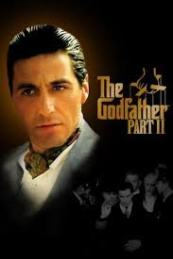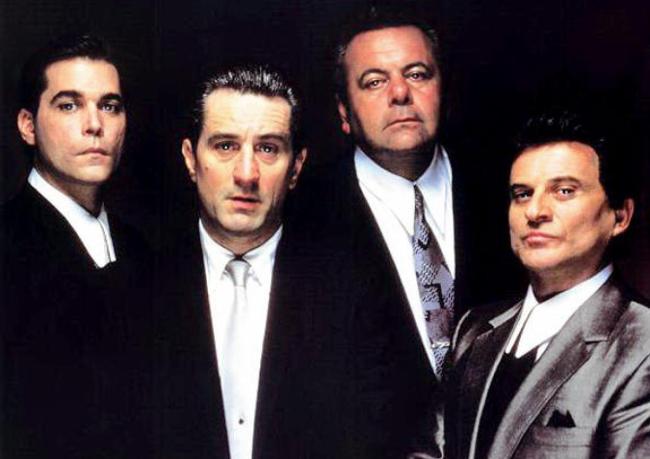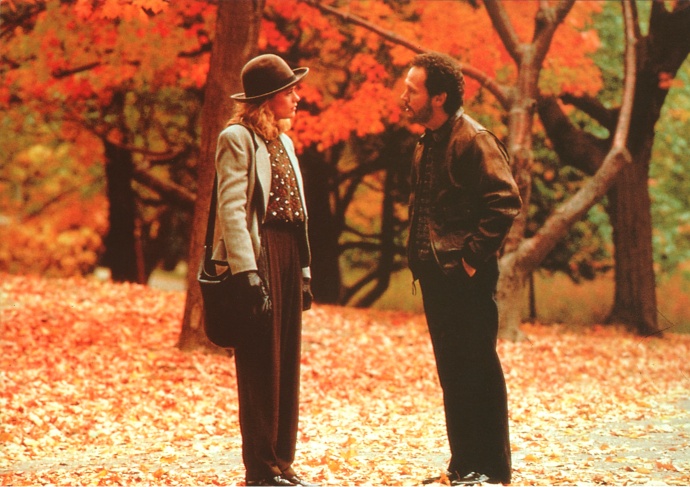Title: The Godfather: Part II
Director: Francis Ford Coppola
The three actors that really stand out and contribute to the miss en scene are Al Pacino (as Michael Corleone), Robert De Niro (as Vito Corleone), and Diane Keaton (as Kay Corleone).
In relation to The Godfather: Part II, I would classify Al Pacino as an interpreter actor. An interpreter refers to actors who have the ability to take material and put their own signature on it (Goodykoontz & Jacobs, 2011). Similarly, both Robert De Niro and Diane Keaton fall under the classification of an interpreter as well.
The reason why I consider Al Pacino to be an interpreter is because of the role that launched his career, as Michael Corleone from The Godfather series. He definitely made his own stamp as the role of Michael Corleone. Here is a clip from The Godfather: Part II demonstrating Pacino’s amazing acting abilities as Michael Corleone:
Here we see a powerful performance from Pacino as Michael as he stays calm while listening to his older brother Fredo (John Cazale) attempt to explain himself and his actions. Even though Michael remains straight-faced, we can feel the intensity and disgust he feels toward Fredo. His ability to portray those raw emotions and coldness toward his own brother really demonstrate not only Pacino’s excellent acting skills, but also conveys Michael’s ruthlessness and seriousness about getting revenge on whomever tried to kill him.
Similarly, Robert De Niro is classified as an interpreter because of his amazing portrayal as Vito Corleone as a young man before he was the Don of the Corleone family. He was able to take the direction and material from Coppola and make the role his own. In the first Godfather, Marlon Brando played Don Vito Corleone as an older man, but in The Godfather: Part II Coppola takes us back in time to show how Vito became a don. Therefore, Robert De Niro had to convey Vito as audiences already saw him as a grown respected boss, while also portraying Vito as a struggling immigrant in New York City.
- Robert De Niro as a young Vito Corleone
In this role as Kay, Diane Keaton is classified as an interpreter as well. She was able to take the guidance, material, and direction from Coppola and make a memorable portrayal of the wife of Michael Corleone. Here is an example of her excellent acting skills as Kay from The Godfather: Part II :
In this clip Keaton evokes so much emotion from the audience as well as Michael. We see the shock and horror on her husband Michael’s face as she tells him the truth about why she lost their son. We also see how upset she is about having to make that decision because we can still feel the immense love she has for Michael even after all he has put her and their family through. She knows that by telling Michael this news he will never be able to look at her the same, but that was something she had to come to terms with because she felt like she was trapped in this family of chaos and tragedy.
Taking a closer look at Diane Keaton and all of her other performances, she would not only be classified as an interpreter, but a wild card actor as well. A wild card describes an actor who is hard to classify as only one specific type because she has the ability to play a wide variety of characters very well without getting typecast (Goodykoontz & Jacobs, 2011). Diane Keaton has played so many different types of roles it is almost impossible to pigeon hole her into one category. For example she has been in films such as Annie Hall, The Little Drummer Girl, Father of the Bride I and II, The First Wives Club, Something’s Gotta Give, The Family Stone, and many more. Keaton has played so many different roles from dramatic to comedic, which in turn, suggests that actors do not need to be classified into only one category, much like the genres of films, they have to ability crossover into other classifications.
References
Goodykoontz, B., & Jacobs, C. P. (2011). Film: from Watching to Seeing. San Diego, CA: Bridgepoint Education, Inc.
MovieClips. (2011). The Godfather: Part 2 – It Was An Abortion (1974) . Retrieved from: http://www.youtube.com/watch?v=_g9RI0GgRIQ
MovieClips. (2011). The Godfather: Part 2 – You’re Nothing to Me Now (1974) . Retrieved from: http://www.youtube.com/watch?v=5Weaop_aiTg
Winston Media. (2011). Robert De Niro [image]. Retrieved from: http://marshallmatlock.com/2011/08/the-mans-man-xxvi-robert-de-niro/



